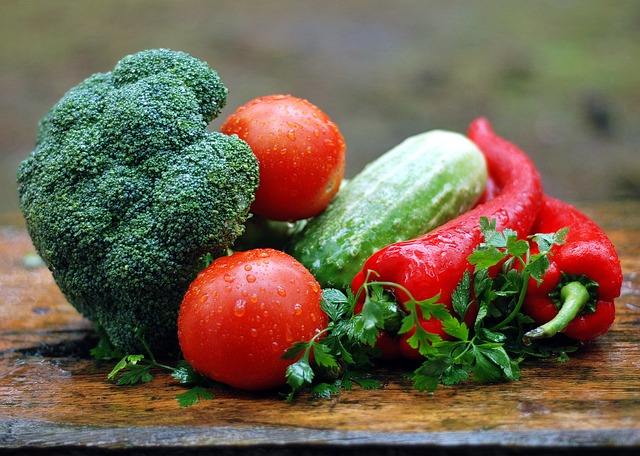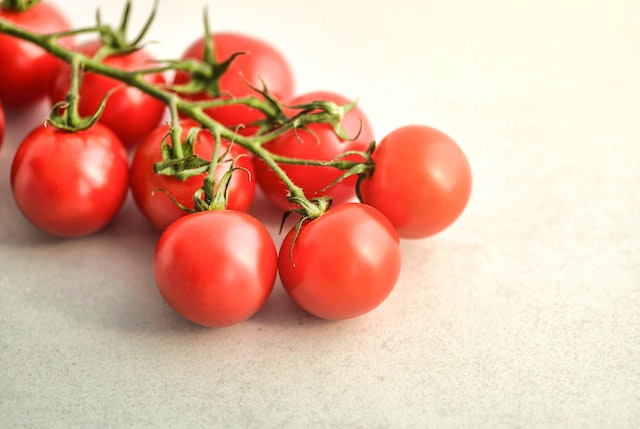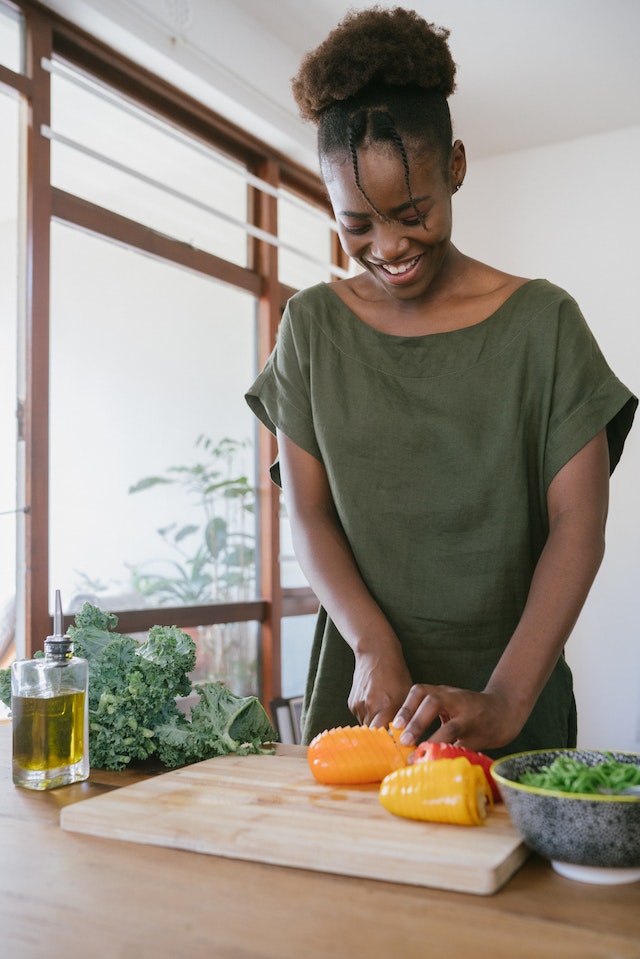
Vegetables are an essential part of any balanced diet. They come in a wealth of colors, textures, and flavors, making them endlessly versatile in the kitchen. From leafy greens to earthy roots, there is a vegetable out there for everyone.
Cooking Vegetables: Tips and Techniques
When it comes to cooking, vegetables can be used in countless ways. They can be roasted, grilled, sautéed, or eaten raw. They can be used as the base of a soup or stew, or as a side dish to accompany a main course. They can even be used to create delicious vegetarian or vegan meals.
Cooking vegetables is a great way to enhance their flavor and nutritional content. Here are some tips and techniques for cooking vegetables to perfection:
Roasting
One of the best methods for bringing out the natural sweetness of vegetables like carrots, tomatoes, Brussels sprouts, and broccoli is roasting. Simply chop your vegetables into bite-sized pieces, toss them in olive oil, salt, and pepper, and roast them in the oven until they are tender and caramelized. You can even add some herbs like thyme or rosemary to the mix for extra flavor.
Steaming
Steaming is a healthy and easy way to cook vegetables like green beans, cauliflower, carrots, and broccoli, which can retain their crunch and color better than when boiled. To steam vegetables, simply fill a pot with about an inch of water and insert a steamer basket. Add your vegetables, cover the pot, and let them steam until they are tender but still crisp.
Sautéing
Sautéing is a quick and easy way to cook vegetables like mushrooms, spinach, and peppers. Simply heat some oil or butter in a pan over medium heat, add your chopped vegetables, and stir-fry them until they are tender and lightly browned. You can also add garlic or onions to the pan for extra flavor.
Grilling

Grilling can add a smokey flavor to vegetables like eggplant, peppers, zucchini, and corn on the cob. Simply brush your vegetables with a little bit of oil to prevent them from sticking to the grill, and grill them on medium-high heat until they are lightly charred and tender.
Boiling
Boiling is a good method for cooking starchy vegetables like potatoes, sweet potatoes, and beets. Simply peel and chop your vegetables, and boil them in a pot of salted water until they are tender. You can also boil vegetables like broccoli or green beans for a few minutes before shocking them in ice water to preserve their color and texture.
Vegetable Cooking Tips:
- Don’t overcook your vegetables to retain their nutritional content and flavor.
- Add herbs, spices, or lemon juice to your vegetables for extra flavor.
- Use a sharp knife to chop your vegetables to ensure that they cook evenly.
- Don’t overcrowd your pan when sautéing vegetables.
- Season your vegetables with salt and pepper to enhance their natural flavors.
Easy Preparation
One of the best things about vegetables is that they are easy to prepare. Many vegetables can be eaten raw, or simply require a quick rinse before cooking. Others may require a bit more effort, such as peeling and chopping, but the extra work is always worth it in the end.
Preparing vegetables doesn’t have to be difficult or time-consuming. In fact, many vegetables can be easily prepared in just a few minutes. Here are some tips to help make vegetable preparation a breeze:

Eat Raw
Many vegetables can be eaten raw, which makes them a quick and easy snack. Vegetables like carrots, celery, cucumbers, and cherry tomatoes require no preparation at all. Just wash them and serve them as a side dish or snack.
Chop and Store
Chop up vegetables like peppers or onions ahead of time and store them in the fridge for easy use later. This will save you time when cooking and make it more likely that you’ll use the vegetables instead of letting them go to waste.
Roasting
Roasting vegetables is a simple and delicious way to prepare them, and it requires very little prep work. Simply toss vegetables such as Brussels sprouts or carrots with olive oil, salt, and pepper before roasting them in the oven.
Blanching
Blanching is a great way to prepare many types of vegetables. Simply drop them into boiling water for a few minutes, then transfer them to a bowl of ice water to stop them from cooking. This will give you vegetables that are crisp and vibrant, making salads a fantastic addition to your meals.
Vegetable Preparation Tips:
- Use a vegetable peeler to easily remove the skin from vegetables like carrots and cucumbers.
- Use a kitchen scale to measure out portions before preparing them.
- Use a salad spinner to dry your leafy greens after washing them, making them easier to chop and store.
- Cut vegetables into uniform sizes to ensure even cooking.
- Keep a selection of herbs and spices on hand to add flavor to your vegetables.
Popular Vegetables
Broccoli – Broccoli is a cruciferous vegetable loaded with vitamins and minerals like Vitamin C, Vitamin K, and folate. It can be roasted, steamed, or sautéed and pairs well with garlic, lemon, or parmesan cheese.
Spinach – Spinach is a leafy green vegetable packed with iron and folate. It can be eaten raw in salads, sautéed with garlic and olive oil, or added to smoothies.
Carrots – Carrots are root vegetables that are high in beta-carotene. They can be roasted, boiled, or grated into salads and slaws.
Potatoes – Potatoes are starchy vegetables that come in many varieties like Russet or sweet potatoes. They can be boiled, roasted, or mashed and are often paired with herbs like rosemary and thyme.
Tomatoes – Tomatoes are technically fruits, but they are used in many savory dishes like salads, sauces, and soups. They are full of lycopene and Vitamin C and pair well with basil and mozzarella.

Kale – Kale is a nutrient-dense leafy green that can be eaten raw in salads or sautéed with garlic and oil. It’s high in Vitamin K and Vitamin C and pairs well with apples, citrus, or pecans.
Swiss Chard – Swiss chard is another leafy green that is high in Vitamins K and A. It can be sautéed, stir-fried, or added to soups and stews.
Beets – Beets are root vegetables that are naturally sweet and earthy. They can be roasted, boiled, or grated and are often paired with goat cheese or balsamic vinegar.
Turnips – Turnips are root vegetables that are often used in soups and stews. They have a sweet and slightly bitter flavor and pair well with rosemary or thyme.
Lesser-Known Vegetables
Kohlrabi – Kohlrabi is a lesser-known vegetable that is part of the cabbage family. It has a sweet and slightly spicy flavor and can be eaten raw in salads or roasted with olive oil and herbs. It’s high in Vitamin C and fiber.
Jicama – Jicama is a root vegetable that has a crisp texture and mild, slightly sweet flavor. It can be sliced and eaten raw as a snack, or added to salads and slaws. It’s high in fiber and Vitamin C.
Radicchio – Radicchio is a type of lettuce that has a bitter flavor and vibrant purple leaves. It can be added to salads for a pop of color and flavor or grilled to mellow out the bitterness.
Fennel – Fennel is a bulb vegetable with a licorice-like flavor. It can be sliced and eaten raw in salads or roasted with olive oil and salt. It’s high in fiber and Vitamin C.
Romanesco – Romanesco is a type of broccoli that has a unique, spiral shape. It can be roasted or steamed and added to salads or pastas. It’s high in Vitamin C and fiber.
Watercress – Watercress is a leafy green vegetable that has a peppery flavor. It can be added to salads or pureed into soups. It’s high in Vitamin K and Vitamin C.
Parsnips – Parsnips are root vegetables that have a sweet and nutty flavor. They can be roasted, mashed, or added to soups and stews. They’re high in fiber and Vitamin C.

Cooking and Pairing Suggestions
Kohlrabi: Roast with olive oil, rosemary, and honey. Pair with grilled chicken or tofu.
Jicama: Slice and add to summer rolls. Pair with a spicy peanut dipping sauce.
Parsnips: Roast with maple syrup and pecans. Pair with baked salmon or trout.
Radicchio: Grill and serve with a balsamic glaze and shaved Parmesan cheese. Pair with grilled steak or chicken.
Fennel: Roast with lemon and garlic. Pair with baked cod or grilled shrimp.
Romanesco: Steam and add to cheesy pasta dishes. Pair with grilled sausage or chicken.
Watercress: Add to sandwiches or use as a base for a salad. Pair with grilled chicken or fish.
When it comes to vegetables, there are endless options to choose from. Whether you stick to the tried and true favorites or branch out and try something new, vegetables are an essential and delicious part of any diet.
Kitchen Inspirations
Vegetables are incredibly versatile and can take on many different flavor profiles depending on how they are prepared. Here are some kitchen inspirations to help you think outside the box and create exciting and delicious meals with vegetables.
Global Flavors
Experiment with different spices and herbs to add global flavor to your vegetables. For example, add cumin and coriander to roasted carrots for a Moroccan-inspired dish, or add ginger and garlic to sautéed bok choy for an Asian-inspired meal.
Grains and Legumes
Pair vegetables with grains and legumes for a complete and satisfying meal. Try tossing roasted vegetables with quinoa or farro, or add chickpeas or lentils to a vegetable soup for added protein and fiber.
Raw and Crunchy
Embrace the texture of raw vegetables by creating a refreshing and crunchy salad. Combine shaved fennel, radishes, and cucumber for a crisp and clean salad paired with fresh lemon vinaigrette.

Spiralized
Use a spiralizer to create fun and unique shapes with your vegetables, like zucchini noodles or sweet potato spirals. These are perfect for adding to salads or as a base for a stir-fry.
Buddha Bowls
Create a colorful and nourishing Buddha bowl filled with a variety of vegetables, grains, and proteins. Think roasted sweet potato, quinoa, greens, shredded carrots, and sliced avocado all topped with a simple lemon dressing.
Storage Tips
Proper storage techniques can help extend the shelf life of your vegetables, ensuring that they stay fresh and flavorful for longer. Here are some tips to help you store your vegetables correctly:
Freezing
Freezing vegetables is a great way to preserve them for longer periods of time. To freeze vegetables, blanch them first, then spread them out on a baking sheet and freeze until firm. Once the vegetables are frozen, transfer them to a freezer-safe container or bag.
Vacuum-sealing
Vacuum-sealing is a great way to extend the shelf life of your vegetables. Vacuum-sealed vegetables can last up to 3-5 times longer than traditionally packaged vegetables. Use a vacuum-sealer to remove air from the bag, which will help prevent spoilage and freezer burn.
Use within a week
For optimal freshness and flavor, try to use your vegetables within a week of purchase. Vegetables like lettuce and spinach can start to wilt and go bad quickly, so it’s important to use them as soon as possible.
Refrigeration
Most vegetables should be stored in the refrigerator to help maintain their freshness. Vegetables like leafy greens, broccoli, and asparagus should be wrapped in a damp paper towel and placed in a plastic bag to prevent moisture loss. Vegetables like potatoes, onions, and garlic should be stored in a cool, dry place away from direct light.

Avoid crowding
Overcrowding vegetables in the fridge can cause them to spoil faster. Make sure to give your vegetables enough space to breathe and avoid stacking them on top of each other.
Clean before storing
Make sure to clean your vegetables before storing them to remove any dirt or bacteria. Rinse them under cold water and pat them dry with a clean towel before storing.
Vegetables are a crucial part of a healthy and balanced diet. They are not only nutritious but also versatile and can be prepared in a variety of delicious ways. From popular vegetables like broccoli and spinach to lesser-known gems like kohlrabi and radicchio, there is a vegetable out there for everyone. By experimenting with different cooking techniques and flavor combinations, you can create exciting and satisfying meals with vegetables. And with proper storage techniques, you can ensure that your vegetables stay fresh and flavorful for longer. So next time you’re at the grocery store, don’t forget to load up on fresh vegetables and get creative in the kitchen!
